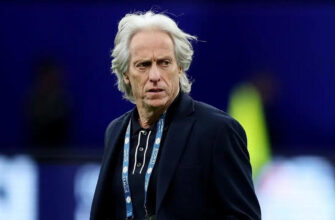The FIFA World Cup, football’s most revered spectacle, is gearing up for an unprecedented evolution in 2026. Set to unfold across the vast landscapes of North America, this edition promises not just a tournament, but a monumental redefinition of the global game. For the first time in its storied history, three nations—the United States, Canada, and Mexico—will share the colossal responsibility and immense privilege of hosting. More significantly, the competition itself is undergoing a dramatic expansion, welcoming 48 teams, a substantial leap from the familiar 32.
- A Continental Carnival: The Tri-Nation Spectacle
- The Grand Expansion: 48 Teams and a Revamped Format
- The Long and Winding Road: Qualification Unpacked
- A Continent of Arenas: Host Cities at a Glance
- Host Cities:
- Canada
- Mexico
- United States
- Beyond the Trophy: What This Means for Football
- Anticipation and Contenders
A Continental Carnival: The Tri-Nation Spectacle
From June 11 to July 19, 2026, the football world will turn its gaze to a continent-spanning festival. This tripartite hosting arrangement is a logistical marvel, involving 16 vibrant cities from Vancouver`s Pacific coast to Miami`s Atlantic shores, and down to the historic Estadio Azteca in Mexico City. Imagine the kaleidoscope of cultures, the fusion of fanbases, and the sheer volume of travel involved. It’s an ambitious undertaking, certainly, but one that promises to immerse players and supporters alike in a truly diverse North American experience. One can only hope the flight schedules are meticulously planned.
The Grand Expansion: 48 Teams and a Revamped Format
The most striking alteration for 2026 is the expansion from 32 to 48 participating nations. This bold move aims to democratize the `Beautiful Game,` offering more countries a shot at glory and, arguably, expanding football`s global footprint. This will manifest in a group stage comprising 12 groups of four teams each. While traditionally the top two from each group advanced, this new format introduces a twist: the top two teams from each group will progress, joined by the eight best third-placed sides. This leads to a rather robust Round of 32 knockout stage, marking a significant extension of the tournament`s competitive phase.
Some purists might raise an eyebrow, perhaps muttering about the potential for a `diluted` group stage where even third place might suffice. However, the counter-argument is compelling: more nations on the biggest stage, more dreams realized, and potentially more unexpected heroes emerging from newfound opportunities. It will undoubtedly make the opening rounds a more complex affair, requiring calculators and tie-breaker charts, but who doesn`t love a bit of statistical drama?
The Long and Winding Road: Qualification Unpacked
The pathway to this expanded spectacle is a grueling one, managed by FIFA`s six continental confederations. With 48 slots available (three automatically claimed by the hosts), the competition for the remaining 45 spots is intense. Here’s how the allocations stand:
- Europe (UEFA): 16 teams
- Africa (CAF): 9 teams
- Asia (AFC): 8 teams
- South America (CONMEBOL): 6 teams
- North and Central America (CONCACAF): 3 teams (in addition to the hosts)
- Oceania (OFC): 1 team
An additional two berths will be decided through a multi-confederation play-off tournament, ensuring a truly global scramble for those final golden tickets. The qualification journey, stretching until March 2026, is a World Cup in itself, filled with triumphs, heartbreaks, and the occasional managerial resignation.
A Continent of Arenas: Host Cities at a Glance
The sheer scale of this tournament is best illustrated by its geographical spread. A total of 104 matches will grace 16 state-of-the-art venues across the three host nations. The iconic Estadio Azteca in Mexico City will kick off the proceedings with the opening match, a fitting tribute to its rich World Cup history. The grand finale, a crescendo of global sporting passion, will be held in East Rutherford, New Jersey, promising an unforgettable climax to over a month of football frenzy.
Host Cities:
Canada
- Toronto
- Vancouver
Mexico
- Guadalajara
- Mexico City
- Monterrey
United States
- Atlanta
- Boston
- Dallas
- Houston
- Kansas City
- Los Angeles
- Miami
- New York / New Jersey
- Philadelphia
- San Francisco Bay Area
- Seattle
Beyond the Trophy: What This Means for Football
This expansion isn`t merely about adding more games; it`s a statement about the future trajectory of football. It opens doors for nations that have historically struggled to break through the qualification barrier, potentially inspiring new generations of players and fans in underserved regions. While the commercial benefits are undeniable, the spirit of inclusion and global participation lies at the heart of this bold transformation. The challenge will be to maintain the elite competitive standard while accommodating a broader range of talent. It`s a tightrope walk, but one FIFA is evidently prepared to undertake.
Anticipation and Contenders
As the clock ticks towards June 2026, speculation will inevitably mount about who will lift the coveted trophy. Traditional powerhouses like reigning champions Argentina, their eternal rivals Brazil, European titans France, Spain, England, and the perennial German contenders will undoubtedly be among the favorites. However, with an expanded field and the potential for `home advantage` boosting the USA, Canada, and Mexico, the tournament could very well unearth a surprising challenger. After all, football has a delightful habit of defying predictions.
The FIFA World Cup 2026 is poised to be more than just a football tournament; it`s a global spectacle of unprecedented scale, ambition, and inclusivity. As the world counts down to kick-off, fans can prepare for a summer of thrilling matches, unexpected narratives, and a truly continental celebration of the beautiful game. The stage is set, the players are preparing, and the world awaits.









